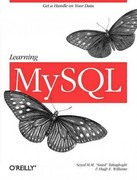Question
write the code in c++ (Binary search tree) Write a function printRange that takes as input a binary search tree t and two keys, k1
write the code in c++
(Binary search tree) Write a function printRange that takes as input a
binary search tree t and two keys, k1 and k2, which are ordered so that k1 < k2, and
print all elements x in the tree such that k1 <= x <= k2.
You can add this function in BinarySearchTree.h (click the link) that we used
in the lecture and lab 7.
public:
void printRange()
{
printRange(root,k1, k2);
}
private:
void printRange(BinaryNode* t, int k1, int k2)
{
// add your code
}
Here are the sample runs:
insert the values (stop when entering 0):
10 5 20 3 22 6 18 7 9 13 15 4 2 1 19 30 8 0
enter the range of values: 8 18
print the values:
8, 9, 10, 13, 15, 18,
// BinarySearchTree.h
#ifndef BINARY_SEARCH_TREE_H
#define BINARY_SEARCH_TREE_H
#include
#include
using namespace std;
template
class BinarySearchTree
{
public:
BinarySearchTree( ) : root{ nullptr }
{
}
~BinarySearchTree( )
{
makeEmpty();
}
bool isEmpty( ) const
{
return root == nullptr;
}
const C & findMin( ) const
{
assert(!isEmpty());
return findMin( root )->element;
}
const C & findMax( ) const
{
assert(!isEmpty());
return findMax( root )->element;
}
bool contains( const C & x ) const
{
return contains( x, root );
}
void printTree( ) const
{
if( isEmpty( ) )
cout << "Empty tree" << endl;
else
printTree( root );
}
void makeEmpty( )
{
makeEmpty( root );
}
void insert( const C & x )
{
insert( x, root );
}
void remove( const C & x )
{
remove( x, root );
}
private:
struct BinaryNode
{
C element;
BinaryNode* left;
BinaryNode* right;
BinaryNode( const C & theElement, BinaryNode* lt, BinaryNode* rt )
: element{ theElement }, left{ lt }, right{ rt }
{ }
};
BinaryNode* root;
// Internal method to find the smallest item in a subtree t.
// Return node containing the smallest item.
BinaryNode* findMin( BinaryNode* t ) const
{
if( t == nullptr )
return nullptr;
if( t->left == nullptr )
return t;
return findMin( t->left );
}
// Internal method to find the largest item in a subtree t.
// Return node containing the largest item.
BinaryNode* findMax( BinaryNode* t ) const
{
if( t != nullptr )
while( t->right != nullptr )
t = t->right;
return t;
}
// Internal method to test if an item is in a subtree.
// x is item to search for.
// t is the node that roots the subtree.
bool contains( const C & x, BinaryNode* t ) const
{
if( t == nullptr )
return false;
else if( x < t->element )
return contains( x, t->left );
else if( t->element < x )
return contains( x, t->right );
else
return true; // Match
}
void printTree( BinaryNode* t) const
{
if( t != nullptr )
{
printTree( t->left);
cout << t->element << " - ";
printTree( t->right);
}
}
void makeEmpty( BinaryNode* & t )
{
if( t != nullptr )
{
makeEmpty( t->left );
makeEmpty( t->right );
delete t;
}
t = nullptr;
}
// Internal method to insert into a subtree.
// x is the item to insert.
// t is the node that roots the subtree.
// Set the new root of the subtree.
void insert( const C & x, BinaryNode* & t )
{
if( t == nullptr )
t = new BinaryNode{ x, nullptr, nullptr };
else if( x < t->element )
insert( x, t->left );
else if( t->element < x )
insert( x, t->right );
else
; // Duplicate; do nothing
}
// Internal method to remove from a subtree.
// x is the item to remove.
// t is the node that roots the subtree.
// Set the new root of the subtree.
void remove( const C & x, BinaryNode* & t )
{
if( t == nullptr )
return; // Item not found; do nothing
if( x < t->element )
remove( x, t->left );
else if( t->element < x )
remove( x, t->right );
else if( t->left != nullptr && t->right != nullptr ) // Two children
{
t->element = findMin( t->right )->element;
remove( t->element, t->right );
}
else
{
BinaryNode* oldNode = t;
if ( t->left == nullptr )
t = t->right;
else
t = t->left;
delete oldNode;
}
}
};
#endif
Step by Step Solution
There are 3 Steps involved in it
Step: 1

Get Instant Access to Expert-Tailored Solutions
See step-by-step solutions with expert insights and AI powered tools for academic success
Step: 2

Step: 3

Ace Your Homework with AI
Get the answers you need in no time with our AI-driven, step-by-step assistance
Get Started


